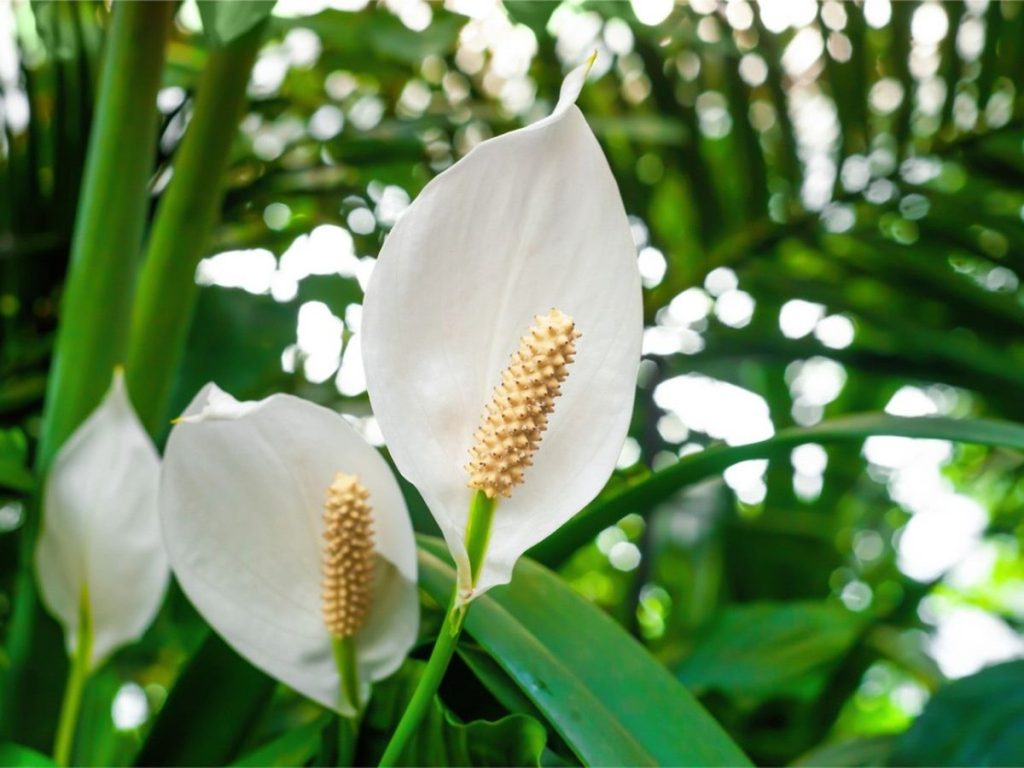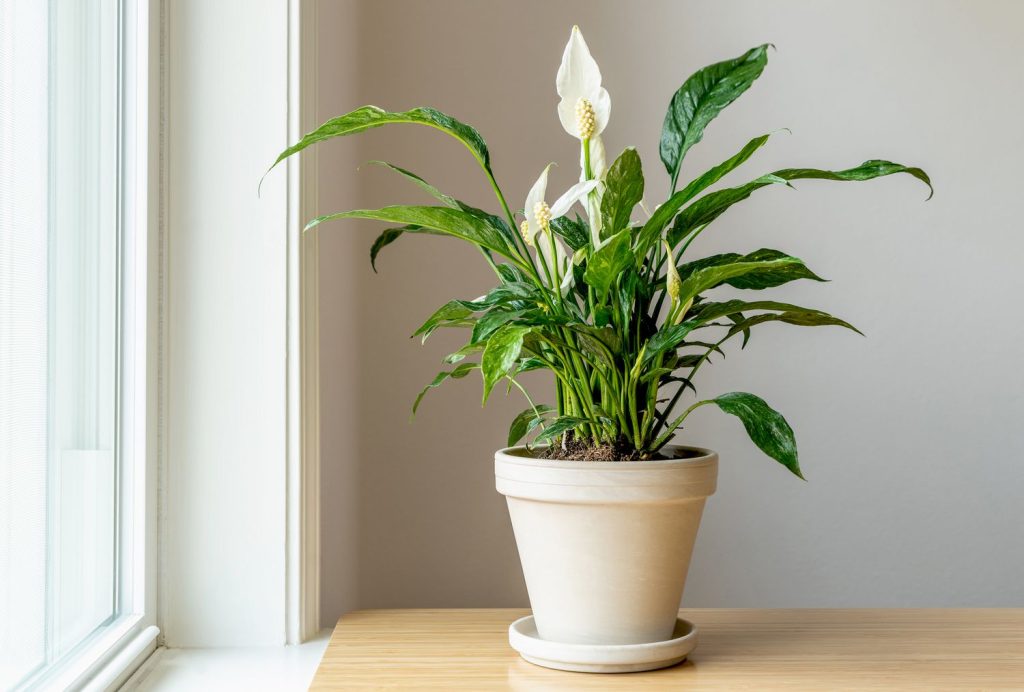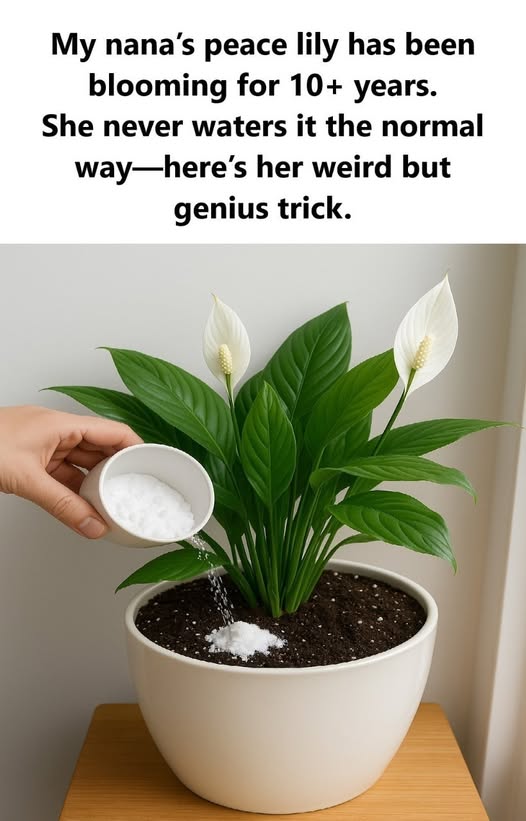Many houseplant enthusiasts are now swapping out traditional watering routines for a bottom-watering method: placing the potted Peace Lily in a shallow tray or bucket of water. The plant then absorbs moisture through its drainage holes.
The Bottom-Watering Technique
Bottom-watering involves filling a tray or bucket with about 2 inches of water, then setting your Peace Lily pot into it and letting it sit for around 24 hours. During this time, the plant naturally absorbs water into its root zone—without the risk of waterlogging the surface soil . It is a gentle, self-regulating method that ensures the soil stays consistently moist.

Why It Works Better Than Top-Watering
Peace Lilies do not thrive in overly saturated soil, and sticking to watering from underneath helps avoid soggy conditions that lead to root rot . This method also eliminates the risk of water sitting in saucers, where it can stagnate. Since the plant draws up only what it needs, the moisture level remains balanced.
Signs Your Peace Lily Needs Water
Whether using top- or bottom-watering, paying attention to your plant’s cues is essential. The top 1–2 inches of soil should feel slightly moist but not waterlogged. If the leaves begin drooping, it indicates the plant needs a drink—but not a flood of water . Overwatering can be just as harmful, causing yellowing leaves and lethargic growth due to root damage .
Seasonal Adjustments Matter
Peace Lilies grow more actively in spring and summer, requiring more frequent watering. During dormancy or slower growth in winter, reduce watering frequency accordingly . With bottom-watering, you can allow the pot to sit in water for a set time, then remove it—rather than following a strict weekly schedule.
Expert Tips for Healthy Growth
- Use well-draining mix & pots with holes. This ensures water can be absorbed and prevents saturation in a bottom-watering system
- Monitor soil moisture manually. A fingertip test remains the simplest and most reliable method: water only when the top layer feels dry
- Use suitable water. Tap water is typically sufficient, though natural rainwater may also be used
- Avoid overwatering. Signs include yellow leaves, wilted appearance, or black spots—clear indicators to let the soil dry slightly before the next cycle
Benefits of Bottom-Watering
- Balanced moisture delivery: The plant draws what it needs from the base.
- Reduces surface mess: No soggy soil on top or puddles around.
- Prevents stale water build-up: Eliminates stagnant saucer water.
- Easier for busy plant owners: Fill the tray and walk away—for up to 24 hours.

Final Thoughts
The bottom-watering method is an effective, low-risk alternative to traditional watering for Peace Lilies. It aligns perfectly with their real preference for moist (but not soaked) soil, cuts the risk of root rot, and simplifies plant care—especially when paired with seasonal schedule adjustments. By often checking soil moisture properly and timing your watering cycles, you can keep your Peace Lily vibrant, lush, and blooming all year. If you’ve struggled with droopy leaves or yellowing foliage, try this method—you’ll likely see a stronger, healthier plant with minimal effort. Happy planting! 🌿

















